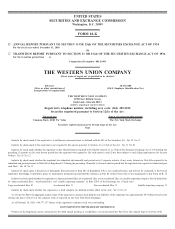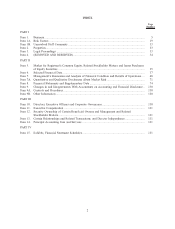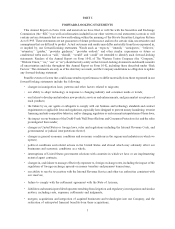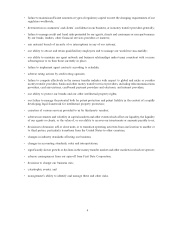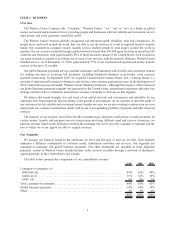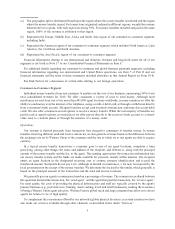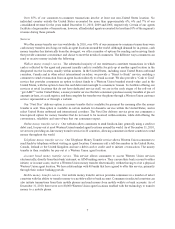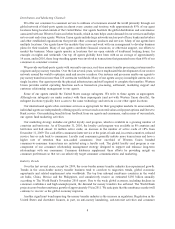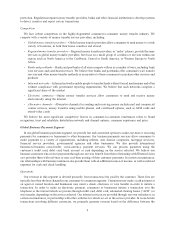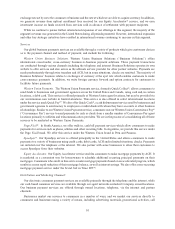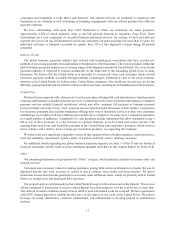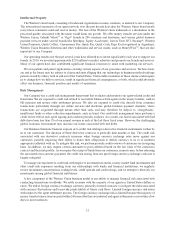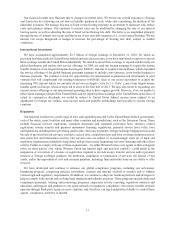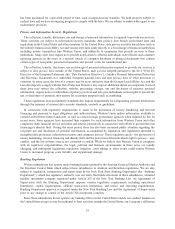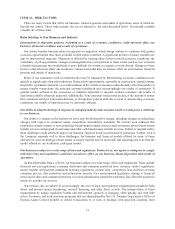Western Union 2010 Annual Report Download - page 13
Download and view the complete annual report
Please find page 13 of the 2010 Western Union annual report below. You can navigate through the pages in the report by either clicking on the pages listed below, or by using the keyword search tool below to find specific information within the annual report.campaigns and attendance at trade shows and seminars. Our internet services are marketed to consumers and
businesses on our websites as well as through co-branding arrangements with our website partners who offer our
payment solutions.
We have relationships with more than 6,400 businesses to which our customers can make payments,
approximately 2,500 of which primarily relate to our bill payment business in Argentina, Pago Fácil. These
relationships are a core component of our global business payments services. On average, we have provided our
payment services to our top 20 businesses to which our consumers can make payments for more than 14 years. No
individual customer or business accounted for greater than 10% of this segment’s revenue during all periods
presented.
Industry Trends
The global business payments industry has evolved with technological innovations that have created new
methods of processing payments from individuals or businesses to other businesses. The various products within the
global business payments industry are in varying stages of development outside the United States. The cross-border
payments industry is expected to expand considerably in the future due to the expanding global focus of many
businesses. We believe that the United States is in the midst of a trend away from cash and paper checks toward
electronic payment methods accessible through multiple technologies. Furthermore, due to the weak economic
situation in the United States, we believe many United States consumers who would use our services are having
difficulty paying their bills and are unable to obtain credit in any form, resulting in our handling fewer bill payments.
Competition
Western Union competes with a diverse set of service providers offering both cash and electronic-based payment
solutions and business-to-business payment services. Competition in electronic payments and business-to-business
payment services include financial institutions (which may offer consumer bill payment or business payment
services in their own name or may “host” payment services operated under the names of their clients). Competition
for electronic payments also includes businesses offering their own or third-party services to their own customers
and third-party providers of all sizes offering services directly to consumers. In many cases, competitors specialize
in a small number of industries. Competitors for cash payments include businesses that allow consumers to pay a
bill at one of their locations, or at the location of a partner business, as well as mail and courier services. The
ongoing trend away from cash based bill payments in the United States and competitive pressures, which result in
lower volumes and a shift to lower revenue per transaction products, are impacting this business.
We believe the most significant competitive factors in this segment relate to brand recognition, customer service,
trust and reliability, convenience, speed, variety of payment methods, service offerings and price.
For additional details regarding our global business payments segment, see Item 7 of Part II and our historical
financial statements and the notes to those statements included elsewhere in this Annual Report on Form 10-K.
Other
Our remaining businesses are grouped in the “Other” category, which primarily includes our money order and
prepaid services.
Customers use our money orders for making purchases, paying bills, and as an alternative to checks that can be
deposited directly into bank accounts or cashed at check cashiers, some banks and some retailers. We derive
investment income from interest generated on our money order settlement assets, which are primarily held in United
States tax exempt state and municipal debt securities.
Our prepaid cards are sold primarily in the United States through retail locations and on the Internet. This service
allows consumers to load money or receive a direct deposit from their employer onto the card for use at a later date.
The card can be used to withdraw money from an ATM or used where debit cards are accepted. We have agreements
with FDIC-insured depository institutions that serve as the issuers of our cards in the United States. We plan to
leverage our brand, distribution, consumer relationships, and infrastructure to develop prepaid in international
markets.
11


